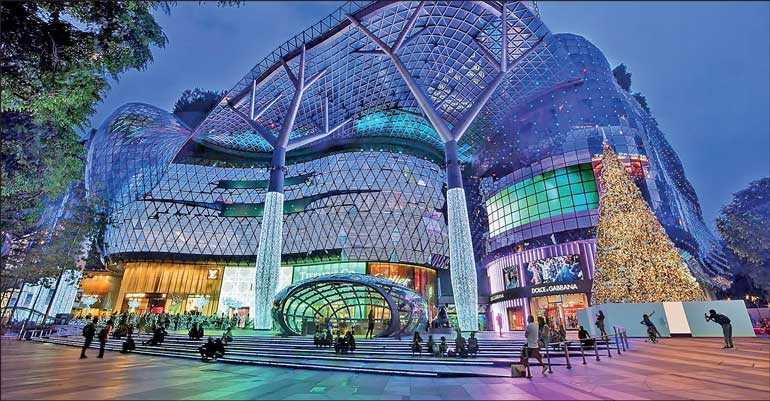Friday Apr 19, 2024
Friday Apr 19, 2024
Wednesday, 6 March 2019 00:00 - - {{hitsCtrl.values.hits}}

Retail stores inside the malls were empty with few shoppers even when its common spaces like the lobby areas, food courts, etc. bustled with people. Mall-going culture the very essence of urban living has not been norm in Colombo so far due to the lack of quality malls. 
However, the impending entry of six new malls with over 1.5 million square foot is expected to change consumer’s behaviour and retail landscape. Therefore, Sparkwinn Research conducted a study among young adults (aged 20-35 years) to understand how their expectations, lifestyle and behaviour would impact the current and upcoming malls in Colombo.
Shabeer, a Computer Science student arrived at a café located in Bambalapitiya to participate in the focus group discussion, after watching a movie in a mall. Most of our other participants just like Shabeer visit malls primarily to watch movies, have a meal but very rarely to shop.
Food, movies, city sightseeing, walks alongside Galle Face Green are their favourite past times in the city. However, the busy city loses its shimmer during long weekends/holidays as urbanites flock to relax near the beachside along the south coast or hilly terrains.
“To me most of the establishments in Colombo are merely shopping complexes and not a mall – simply due to the lack of experiential and wholesome offerings for an entire family,” says Annuradha.
People want to lose sense of time, when they visit a mall and get immersed in its vastness and variety – basically access everything under one roof. “Local malls are only built for shopping, and there is lack of variety for us to compare and shop,” said one of the participants.
In Colombo, people are used to visiting separate, specific places to dine, shop and for entertainment related purposes. Over 80% of females preferred to shop at stand-alone stores compared to malls, according to a survey conducted by Sparkwinn among women shoppers in Colombo. Nevertheless, whenever they travelled abroad, they preferred to shop at international malls due to the discounts and promotions offered.
Local malls are perceived to have an expensive, limited range of clothing options when compared to stand alone stores. However, it is expected that consumers shopping behaviour will change over time with the entry of new malls.
Shoppers’ perceptions and expectations are heavily influenced by their visits to malls in foreign countries, and the local mall experience falls short in comparison.
“I remember visiting a mall in Italy, and it was not just about shopping and international brands. They had botanical gardens where one could pick their plants and machinery. Everything was under one roof, and we could engage in activities based on our area of interest, so my mum went to the cookery section, dad to the gardening area and I was at the arcade playing games,” recalled one of the participants.
He added: “The whole atmosphere was welcoming, and didn’t make people feel like outcasts. I like to visit malls that make it easy to enter dressed in casuals, wearing a pair of slippers, etc.”
Consumers want to feel comfortable window shopping, sitting on a bench, hanging out with friends, listening to music while sipping coffee. In fact, the first mall in Edina, Minnesota was intended to inspire a community feeling where people felt comfortable to chat, have a drink and shop.
Malls are essentially a concept to bring people together through common spaces, find common interest and experiences – whereas shopping followed afterwards, as a by-product. For example, live events, screening cricket matches, hosting community-related projects will help create a sense of belonging. A happening place with a lot of action will indeed attract more crowd, enhance consumer experience and retailer’s footfall.
Focusing on shopper experience is a top priority for malls to become dynamic hubs. Open-air, green spaces, spacious interiors, etc. are well-accepted concepts to create a welcoming environment which ensures people hang around longer, and spend more. A spacious, well-designed mall with a wide range of activities for consumers to explore, discover and experiment will make them lose sense of time at the malls.
Many believe Sri Lanka is at the edge of a transformation, a shift in shopping experience, where consumers shift to malls from standalone shops. Pakistan underwent this shift around seven or eight years ago, even malls in Myanmar are able to provide an elevated shopping experience, while we are yet to see the transformation in Sri Lanka.
Based on our qualitative research discussions, the right mix for an ideal mall would revolve around satisfying consumers’ four key needs – entertainment, dining, socialising and shopping. Malls in Colombo will be able to perform much better if the preferences of consumers are taken into account, so that everyone benefits from the new developments.
(The writer is a Research Manager at Sparkwinn Research. She can be contacted on [email protected].)